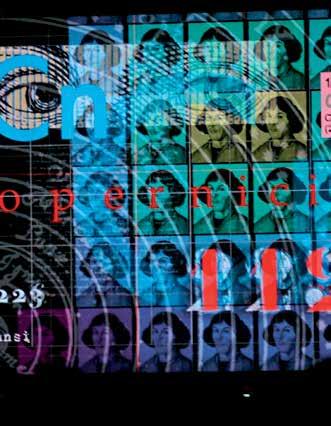
8 minute read
Science & Innovation
In the Service of Science and Mankind
Polish scientists’ innovative and sometimes revolutionary ideas have been recognized around the world for years. When you hear about conquering Mars, a life saved thanks to endoprosthetics, or a revolutionary face transplant operation – you are hearing about Poles. When you learn about graphene, one of the most sensational discoveries in recent years – that’s also news from Poland. And when the next flu epidemic strikes, you may manage to avoid suffering bone-weariness and congestion – thanks to the achievements of Polish scientists •
Advertisement
Copernicium (Cn) – chemical element with an atomic number of 112 discovered in 1996, was named after the PolishGerman Astronomer •
A bit of history
The Polish scientist Maria Skłodowska-Curie was the first person in history to receive the Nobel Prize in two different fields: chemistry and physics.
Looking back over the past century, you can’t ignore Prof. Jan Czochralski, a famous inventor who gained the world’s attention as the creator of an innovative method for producing monocrystals. His surname might be a jawbreaker for people from many countries, but it’s a name to remember, because the silicon crystals in mobile phones, music players, and even credit cards are still obtained today using Czochralski’s method. Although he mainly worked in Berlin, his scientific heritage, who are we to judge: Copernicus probably spoke mostly Latin, but the man who stopped the sun and moved the earth was a son of the Polish people. As a testament to his achievement’s longevity, 2013 was declared the Jan Czochralski Year in Poland and his scientific legacy continues to be used by us all 24 / 7.
Another distinguished Polish researcher is Prof. Aleksander Wolszczan. In the late 20th century, he discovered the first three planets outside of our solar system. Thanks to him, new faces have appeared in the sky in the 21st century as well, as two new planets have been discovered, and Wolszczan’s name is known around the world •
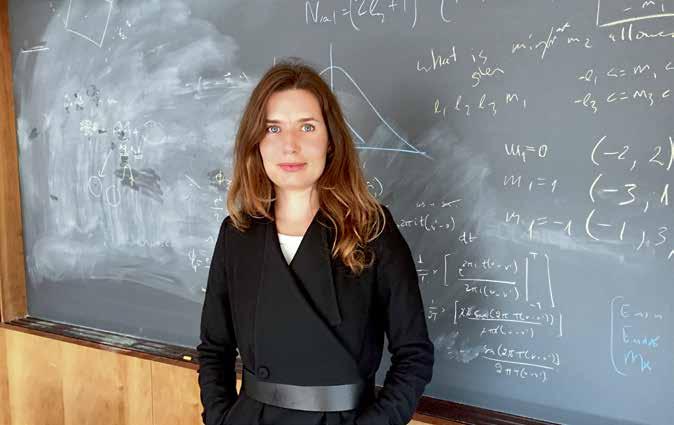
Polish scientists change the world
A New Lease on Life
Every time Connie Culp smiles, she’s also smiling in the direction of Dr Maria Siemionow. Thanks to this transplant specialist from Poznań, Connie regained her appearance and her will to live after being shot in the face by her husband in 2004. Culp’s facial transplant, performed by Siemionow in 2008, was the fourth such operation in the world, but the first which successfully restored an entire human face-a breakthrough in the history of world medicine.
Dr Siemionow not only made a medical advance, she also conquered ethical barriers. The face transplant was not deemed to be a life-saving operation, but Siemionow fought for her patient’s right to receive the treatment. Her determination won over the bioethics commission. All in the service of science and humanity • Hear Poland and the world
Thanks to Prof. Henryk Skarżyński from the World Hearing Center in Kajetany, dozens of people are hearing their loved ones’ voices, music, and the sounds of the world around them for the first time-some after living in silence for years.
Cochlear MET is a new type of inner-ear implant. It’s not just highly effective; it has also revolutionized the market for medical procedures for senior citizens • Outsmarting the flu
Dr Marta Łuksza (AbOVE), a Pole practising in the United States, developed a system capable of predicting what strain of the flu virus will be most widespread in the near future. The technology helps ramp up production of the right vaccines. Before, the effectiveness of flu shots largely depended on the (low) accuracy of forecasts for which flu virus would attack. Thanks to Łuksza’s research, the effectiveness of the prediction algorithm now stands at 93% • Research in every home!
Zooniverse.org is a platform enabling ordinary people to participate in scientific studies. With simple interfaces, users can help scientists classify various data. There are so many studies and so much information out there, scientists would have to invent a time machine to find time to keep track of it all by themselves!
The Zooniverse platform was introduced to Polish Internet users by Prof. Lech Mankiewicz, a distinguished astronomer and physicist and director of the Center for Theoretical Physics of the Polish Academy of Sciences. The engagement by Poles exceeded the researchers’ most ambitious
expectations. More than 150,000 volunteers are now involved in the project, more than users from other countries • Conquering The Red Planet
Sending people to Mars may well happen in the not too distant future. Poland will also deserve to plant its flag there. Polish students are involved in designing a vehicle for the manned mission to Mars and are achieving spectacular successes in this area.
And Mars is a very Polish planet! At the beginning of 2015, students from AGh University of Science and Technology in Cracow won the prestigious European Rover Challenge for robots to explore the planet’s surface. An American team came in second, but third was another team from Poland, representing Wrocław University of Technology, followed by students from Białystok. All five Polish teams participating in the challenge finished in the top ten-conquering the cosmos from here on earth • Sleep and Dream in Polyphases!
If you don’t have time to sleep, don’t worry! Kamil Adamczyk, Janusz Frączek and Krzysztof Chojnowski certainly didn’t lose sleep thinking up their revolutionary polyphasic sleep project. It divides nightly rest (although not necessarily at night) into shorter, much more efficient fragments which then form sleep cycles. Basic sleep doesn’t take all night, but just a few hours. Rest is promoted by short, well-chosen naps. The NeuroOn sleep mask is linked to a smartphone app that processes the information and helps determine the right sleep cycle for each user. With this system you can spend less time sleeping and more time exploring Poland! •
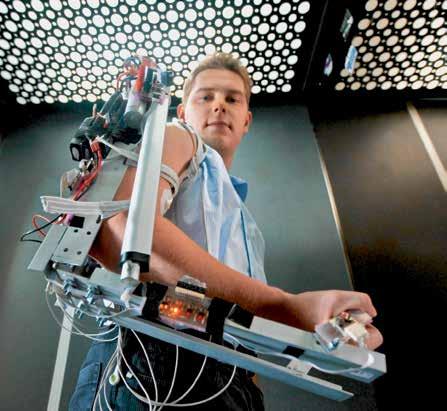
It works!
Graphene
An unusual structure of carbon atoms with vast potential in science. It’s an international project, but some of the atoms must come from Poland! •
ItraPol and LutaPol
Healthy competition (literally) for Joanna Jurek and her fantastic use of nanofibres. Substances invented at the National Centre for Nuclear Research will precisely target cancerous cells. This method is based on a classic use of radioactive isotopes innovatively combined with various active substances •
Perovskite
Olga Malinkiewicz invented a method for layering perovskites-photovoltaic material on flat surfaces. The result is a revolution in the construction of solar cells •
Professor Why
A fantastic game for young scientists created by the Polish team at CTAdventure. While it might seem impossible to display chemistry experiments in virtual reality, this game for young chemists (and older ones too) proves that nothing is impossible in the computerized world! •
Egzotech
A Polish company headed by Michał Mikulski, inventor and designer of an exoskeleton for rehabilitation of the human arm (AbOVE). It’s a machine placed over the arm that analyzes the work of the muscles and helps improve muscle function, for example after an accident. A similar exoskeleton for the legs will be launched soon! •
Polish Mars rovers conquer the cosmos!
Hyperion 1
ar Faculty of Mechanical Engineering students, Białystok
University of Technology �� 1st place - University Rover
Challenge 2013
Details: • six-wheel construction featuring an innovative suspension: each wheel is independently driven • two on-board tools: grabber (used in the equipment servicing task) and a drill (used to collect soil samples)
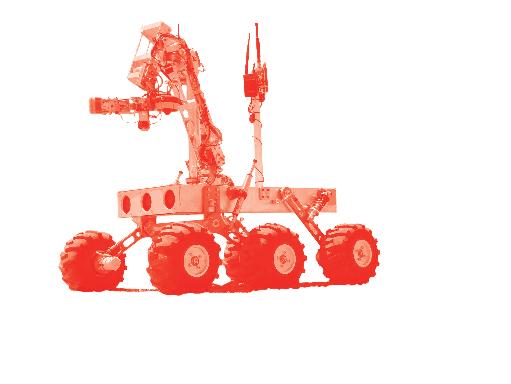
Magma 2
ar Faculty of Mechanical Engineering students, Białystok
University of Technology �� 1st place - University Rover
Challenge 2011
Scorpion
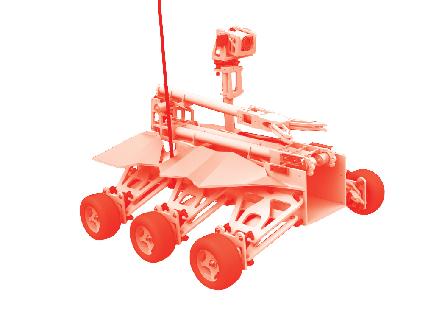
ar Wrocław University of Technology students �� 1st place - European Rover
Challenge 2014 3rd place - University
Rover Challenge 2015 • redundant vision system (3 cameras on board and two transmitters broadcasting on two frequencies) • GPS system used to navigate in a desert environment • designed to operate in desert, sandy and rocky terrain. Able to climb up to 60-degree slopes.
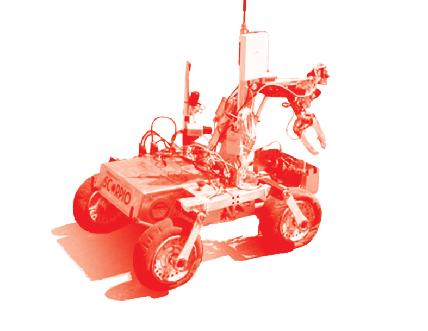
Details: • two hexacopters used to observe the terrain - first use of flying object in a URC competition • articulated manipulator for collecting rock samples • a set of first-aid tool-boxes to assist wounded astronauts
Details: • Cordura tyres (a highly durable and abrasion-resistant material) filled with polystyrene granules complementing the rigid mounted suspensions resulting in excellent off-road capabilities and shock absorption • modified rocker bogie suspension (as used in NASA rovers) • modular construction - the rover is highly adaptable, new modules/capabilities can be easily added
Culture
Polish culture is fresh and available 24/7, 365 days a year. It fills atmospheric cafe-bookshops, cinemas and theatres, modern art galleries and buzzing nightclubs playing our music. Adjectives describing Poland’s cultural output certainly include ‘dynamic’ and ‘varied’ – everyone is bound to find something to their liking. In recent times, it has become a training area for new ways of talking about the world - both by young new artists as well as old hands.
These experiments are finding acceptance from global audiences, as seen in the recent Oscar for Ida, Berlin film festival’s Silver Bear for Body/Ciało (oPPoSITe PaGe ToP) and numerous exhibitions of Polish art put on by some of the world’s leading galleries and museums. Of course, there are also performances at the top theatre festivals, translations of Polish literature into foreign languages and the brisk sales of Polish music abroad. Our culture is no longer content to stew in its own juice and has begun to use its local character to engage with universal themes. By choosing to fully experience what Polish culture has to offer, you’ll not only discover a new cultural context, but also look at your own world in a whole new way •
OPOSITE PAGE TOP: Still from Miasto 44 (Warsaw ’44) directed by Jan Komasa OPOSITE PAGE bOTTOM: Still from Katedra (The Cathedral), an Oscar-nominated (2003) short directed by Tomasz Bagiński










